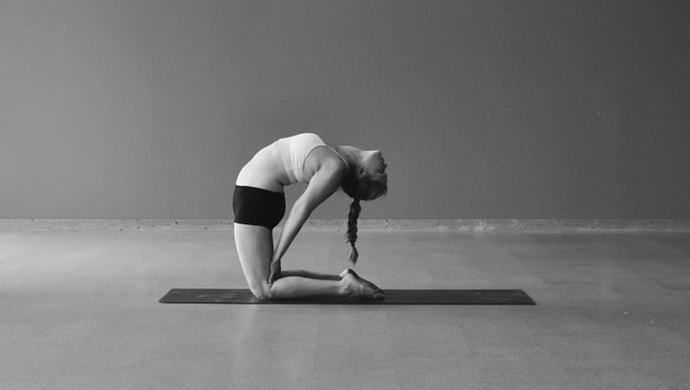|
Yoga, like pretty much every other skill, relies on a combination of factors. Two of the most important are knowledge and practice. Knowledge is our understanding of more theoretical concepts: why we are doing it, what is the underlying belief system, how might I improve, etc. Practice is the actual putting-in-motion of these concepts: the hours, days, months and years of using the body and mind to build experience and generate progress.
These two are powerful when used together. They are much less impactful when apart. KNOWLEDGE Knowing what you believe, why you believe it, what you're practicing and why is absolutely essential to any sort of progress. If you don't know these things, any effort you exert could easily be put in the wrong direction, taking you further from your goals rather than closer to them. If you want to go north but don't have a compass, it doesn't matter how fast you run. You are likely to unknowingly head in the wrong direction, getting further from your goal. And the harder you work, the further you get. Yoga practice is the same way. Whether you're trying to improve your balance, stand on your hands, breathe better, or have deep meditation, it is essential to first know what to do. Each of these goals will require different techniques, and if you use the wrong one you will essentially make progress in the wrong direction. Therefore knowledge is indispensable to progress. Effort or practice without knowledge can be futile and counterproductive. This can lead to frustration. Often, when you feel stuck in your practice, it is greater knowledge rather than greater effort that will help. Knowledge helps us refine our understanding of who we are, where we are, where we want to go, and how to get there. PRACTICE The other half of the conversation is the effort we exert toward our goals — practice. It may be obvious to say, but this is where the actual progress happens. If you want to go north and you know which direction is north, you still have to put one foot in front of the other and actually go north. No amount of knowing will get you there. It is easy for intellectual people to overemphasize knowledge. We think that if we know more, then we will make more progress. We continually collect and consume copious amounts of information and knowledge. But we make limited progress this way. Knowledge must be accompanied by practice, because our bodies and minds grow through use. To improve our balance, we must allow the body to learn how to connect the feet, legs, hips, etc. No amount of study will do this. Only actual practice. Also, study uses the mind in a specific way, essentially practicing one skill. If we study a lot, we will get good at studying. But we won't improve other skills, like balancing, breathing or meditating. To progress at those, we must practice them. PUTTING THEM TOGETHER There is a well-known saying in the yoga world, often attributed to K. Pattabhi Jois, the founder of Ashtanga Vinyasa Yoga: "Yoga is 99% practice, 1% theory." The quotation is probably hyperbolic, intended to make a point. But the danger in this mentality is that it may encourage thoughtless practice and effort. To return to our analogy, it is like saying "99% walking, 1% checking the compass." As teachers, we speculate that the lesson Jois was trying to teach is: Don't get stuck in thinking about things. And don't think that knowledge will save you or be enough on its own. You must practice. We agree with this, but we also think that the opposite is equally likely. Students may think that practice and effort are enough on their own. Then they will cultivate very little knowledge or understanding of what they're doing and why. They will end up making progress in the wrong direction. We think that the two are equally important: 50% practice, 50% knowledge. The two feed and inform each other. Your actual practice will help you understand why ancient scriptures say what they do. And your knowledge of history, philosophy, and your own goals will help your practice be more effective and productive.
0 Comments
Leave a Reply. |
AUTHORSScott & Ida are Yoga Acharyas (Masters of Yoga). They are scholars as well as practitioners of yogic postures, breath control and meditation. They are the head teachers of Ghosh Yoga.
POPULAR- The 113 Postures of Ghosh Yoga
- Make the Hamstrings Strong, Not Long - Understanding Chair Posture - Lock the Knee History - It Doesn't Matter If Your Head Is On Your Knee - Bow Pose (Dhanurasana) - 5 Reasons To Backbend - Origins of Standing Bow - The Traditional Yoga In Bikram's Class - What About the Women?! - Through Bishnu's Eyes - Why Teaching Is Not a Personal Practice Categories
All
Archives
May 2024
|







 RSS Feed
RSS Feed